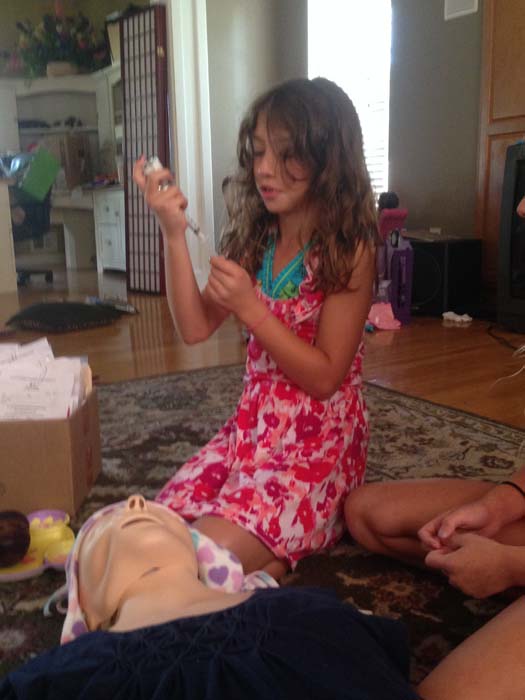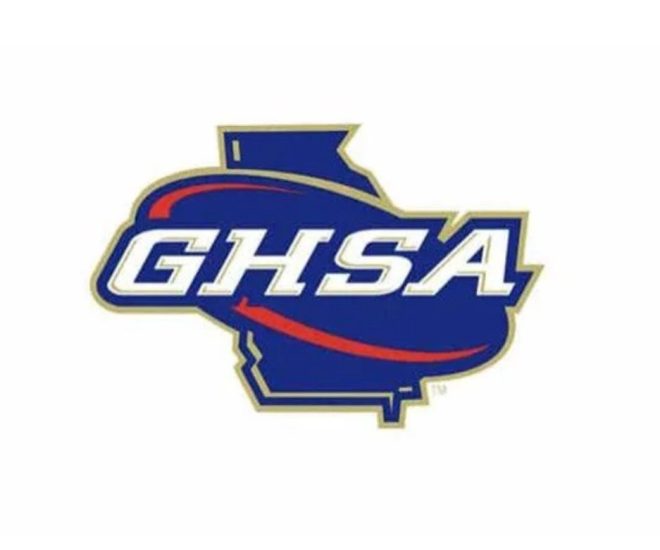Kids who can stop an overdose? Compassionate care emerges in fight against heroin
Published 8:00 am Wednesday, November 11, 2015

- Activist Jennifer Stepp's daughter practices administering naloxone to reverse the effects of an opioid overdose.
Jennifer Stepp is proud that her son is in recovery from his heroin addiction, but, if he ever needs it, her 8-year-old daughter knows how to administer the drugs that would save his life.
“She said ‘If something happened to my brother, I want to save him,'” Stepp said.
In rural Bullitt County, Kentucky, Stepp is a grass-roots activist. She’s pushing for greater access to opioid abuse treatments, promoting the usage of overdose-reversing medications and hoping to end the stigma of addiction.
“Society accepts being cruel to people who suffer from addiction,” she said. “It needs to change, because people are dying.”
Heroin deaths are on the rise — between 2002 and 2013, the rate of heroin-related overdose deaths nearly quadrupled, according to the Centers for Disease Control and Prevention — and with those deaths come more ways to try and prevent them.
However, new approaches to managing and treating heroin and opioid abuse suggests a social shift away from the war on drugs of the 1970s and 80s that leaned heavily on police action and incarceration to reign in drug usage.
In the small seaside town of Gloucester, Massachusetts, walking into the police department with a handful of drugs and needles will land you in a treatment program, not in a jail cell.
Since June 2015, more than 250 addicts have participated in Gloucester Police Department’s “angel” initiative, turning in their drugs and paraphernalia before being guided by volunteers into a local recovery program.
The program has drawn national attention and grown into a national organization, the Police Assisted Addiction and Recovery Initiative, which helps other departments adopt Gloucester’s approach. Departments in Connecticut, Florida, Illinois, Maine, Missouri, New York, Ohio, Pennsylvania and Vermont all have their own version of the “angel” initiative.
In Kentucky, Stepp is turning to children — some of them as young as 8-years-old — to both prevent overdose deaths and try to prevent future addictions, and she’s starting with her own.
Stepp’s whole family is trained to administer the drug Narcan, the brand name for naloxone hydrochloride, which reverses the effects of a heroin or opioid overdose.
She’s even trained her 8-year-old daughter, showing her how to fill a syringe and inject the medication into an eggplant. Their family runs practice drills in her home.
“We are armed and dangerous at the house with Narcan,” Stepp said. “I don’t see any difference in this than training someone in CPR, or doing fire drills.”
On November 21, Stepp will give her first Narcan class to kids ages eight and up. A parent or guardian must consent to the training and students will learn how to administer the naloxone three different ways, including via nasal spray and with a syringe.
The technology for administering naloxone is also advancing. Evzio, which Stepp described as “like the Holy Grail,” is a naloxone auto-injector that walks the user, out loud, through how to administer the medication.
She hopes that in addition to putting the life-saving drug in more hands, she’ll also stop kids from becoming future drug abusers by reaching them before dealers can.
“I want a recovery revolution with an emphasis on prevention and these kids are the prevention,” she said. “How great will it be if my kid says, when she’s in high school ‘I know what to do, I’ve got this’ when she’s 18?”
Her approach is not without critics. Some say naloxone encourages further drug use by giving addicts an easy out. The Cincinnati Enquirer cited the potential risks of Stepp’s program in particular — naloxone can send someone into immediate withdrawal and with it a violent reaction — and called the reviving of an overdose victim “too large a responsibility for a child.”
Other programs have sought to reduce the harm done by intravenous drug use.
In April of this year, the state of Indiana reluctantly ended a long-time ban on needle-exchange programs in response to the largest HIV outbreak in the state’s history. The crisis — caused by intravenous drug users sharing needles — more than doubled the number of diagnosed HIV cases in the state between March and May.
“There’s definitely a perception that syringe or needle exchange is seen as promoting drug use,” said Robert Lubran, director for the Division of Pharmacologic Therapies for SAMHSA. “Our message is to see needle exchange as a transition point to getting someone into treatment.”
Lubran believes education will be key to advancing medication-assisted recovery programs and making the different medications a less stigmatized path away from addiction.
“Not everyone needs or would do well on medication, but for those who do, they should be given that choice,” he said, adding that many myths surround the medications used to treat opioid addiction.
Methadone in particular, he said, has a bad reputation that has led to communities resisting methadone clinics, which are seen as magnets for crime.
“The myth out there is that it maintains you in a state of addiction, by taking methadone that you’re going to be experiencing euphoria. If it’s done correctly, you would not feel that,” he said.
But Lubran said he and his colleagues see change coming as more states look at covering medicine-assisted addiction treatment under Medicaid, as more grants are available to pay for naloxone and as programs and as new policies educate the public on handling the ongoing opioid crisis.
“People seem to think that you’re enabling addiction, and you’re not. You’re enabling a life.” Stepp said. “You’re enabling someone to live. The goal with addiction is recovery and someone will not recover once they’re dead.”
CNHI Indiana state reporter Maureen Hayden contributed to this story.





